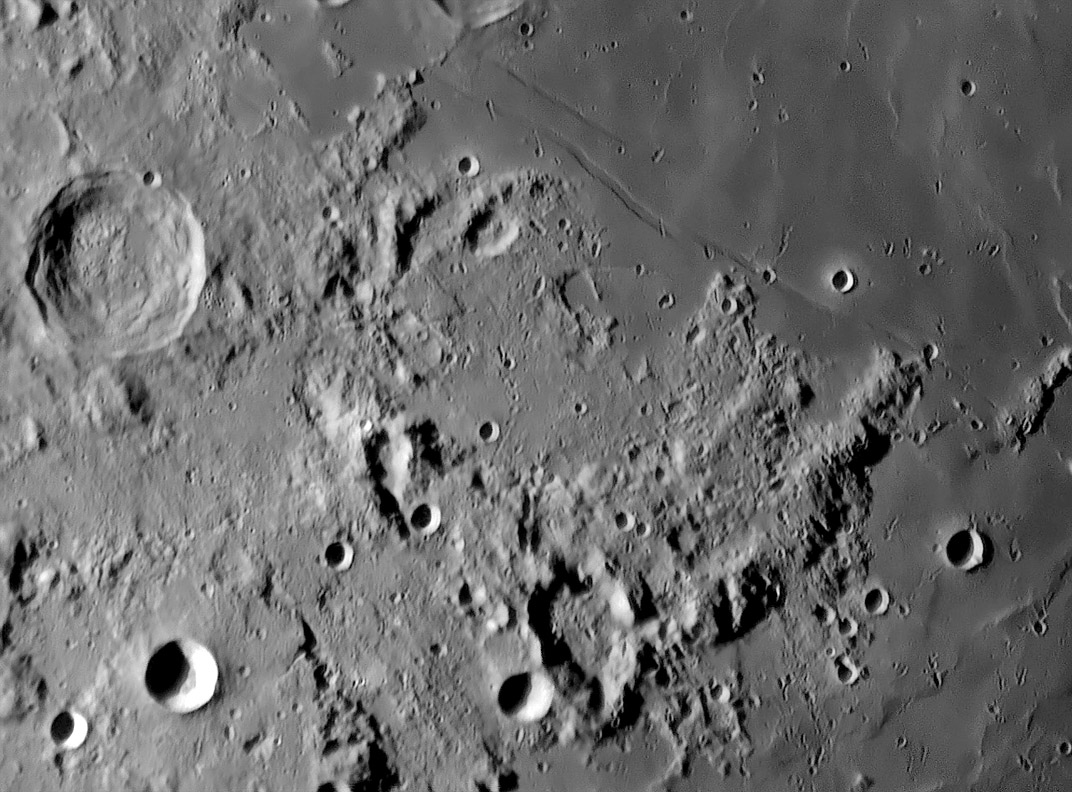image by Wes Higgins
Nearly every piece of topography on the Moon is due to impact. Except, and its a big exception, all the volcanic terrain. But even some of the volcanic features, such as the Hypatia Rilles seen here, are a direct consequence of the fact that the mare lava cut by the rilles was fractured due to subsidence of the floor of the Serenitatis impact basin. And the lavas themselves probably would never have erupted onto the lunar surface if the deep under the basin hadn’t provided conduits to the surface. The rough remainder of the image is also constructed by impactism. Most of the craters are direct impacts, and the chains of small craters are secondary impacts. And do you notice the two large incomplete circles - one offset inside the larger, east of Delambre and north of Hypatia? These are both rims of ancient impact craters whose right sides were dropped down by faulting along the basin or perhaps just flooded by rising lavas of Mare Serenitatis. Finally, on our tour of impact effects, notice the striations between Hypatia and Alfraganus - they are approximately radial to Imbrium and are probably related to that basin’s formation.
Technical Details:
July 15, 2006, 18″ Reflector, 4x Powermate, Infinity 2-1M camera, MAP processing, stack of 210 frames.
Related Links:
Rükl plate 46
Wes’ website
Now you can support LPOD when you buy ANY book from Amazon thru LPOD!
COMMENTS?
Click on this icon File:PostIcon.jpg at the upper right to post a comment.




